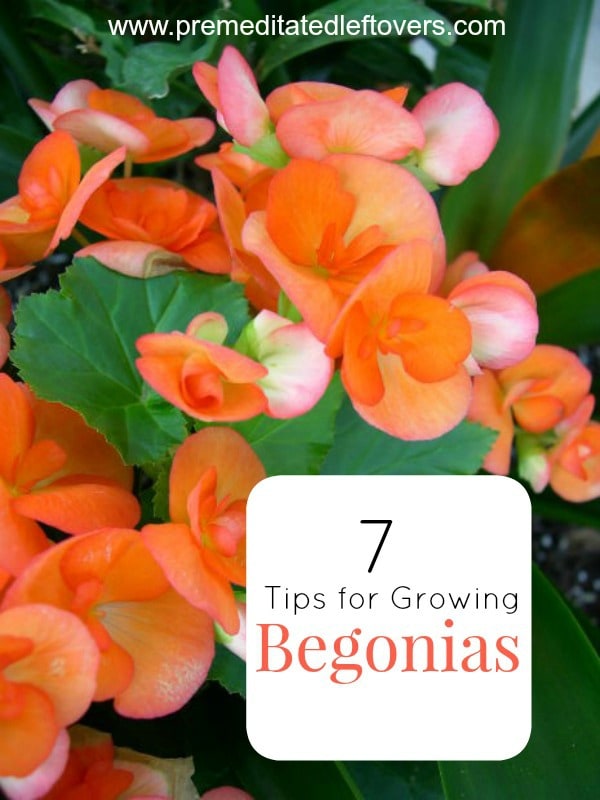
If you are worried that your yard doesn’t provide enough sun for beautiful flowers, think again. Begonias are one of the most colorful annuals there are, and they can be grown in yards that lack sun without a problem. If you want to give begonias a try this growing season, take a look below at 7 tips for Growing Begonias so you can be sure to enjoy a successful season too. You will find that begonias are easy to grow and bloom all season long. Who can argue with that?
7 Tips for Growing Begonias
1. Skip the seeds. Begonia seeds are very difficult to grow. You should instead skip the seeds and go straight to seedlings. This way, you can enjoy plants that have been given a hardy start and can enjoy those beautiful blooms sooner.
2. Give them afternoon shade. Watch the sun patterns in your yard so you can put your begonias in a space that gets plenty of afternoon shade. They can do well with morning sun but prefer to cool off in the afternoon. Hanging baskets with begonias are ideal, because if you have to you can move them as the sun shifts.
3. Keep them moist. Begonias love moist soil, and it is advised to mist the soil with a spray bottle between feedings. Be careful however not to saturate the soil, as you don’t want to soak the roots which can later lead to rot and disease.
4. Stir in some peat moss. Begonias respond well to peat moss, so if you have the option to stir some into the soil, do it! This can help nourish the plant and provides preferred growing conditions. You can find this additive at most reputable gardening centers. If you don’t have any, some organic matter stirred in can help.
5. Feed often. Begonias respond well to fertilizer, especially after the initial planting. You can feed once when you plant and then continue weekly feedings during the first few weeks. You will find that this can encourage foliage growth and result in bigger, brighter blooms. Check on your begonias daily so dead parts can be removed and discarded. Or, you can toss them into your compost bin.
6. Dead head often. Leaving on dead blooms is a quick way to kill your plant. Don’t let your begonia plant waste energy on dead blooms. Be sure to dead head the plant often and remove blooms once they are spent. You can also remove dead foliage in order to encourage new growth and encourage the plant to direct energy elsewhere.
7. Provide airflow. Don’t overcrowd your plants and place them in an area where they don’t get ample airflow. This is one of the easiest ways to bring on rot and other diseases which can quickly take over your plant. Instead, allow a good 6-8 inches between plantings and hang baskets where they get plenty of airflow as well.
If you are ready to start growing begonias in your yard, give these tips for growing begonias a try and you will no doubt enjoy a successful season.

Richie says
Do begonias need to die off I’m winter to bloom the following spring?
vivian says
what type of fertilizer do you use for begonias